Forget, just for a moment, the restrictions placed on all our lives by the Virus and reflect on how this has become the Year of the Walker. If such a thing looked unlikely in the deep lockdown of the sunnier months, it makes sense in the sharp light of these winter days.
Yes, we’ve cut right down on trains and buses, as the edicts on confined spaces said we should. Shocking for the national economy, but surely good for personal health. Yet another instance of the swings-and-roundabouts logic imposed by the Plague. Government figures show that by the summer, 39% of people said they were walking more than before the pandemic struck. Now, signs of a new dawn can even be sensed in the Department of Transport’s sober pronouncement: “The Covid-19 pandemic has had a substantial and potentially sustainable impact on active travel.”
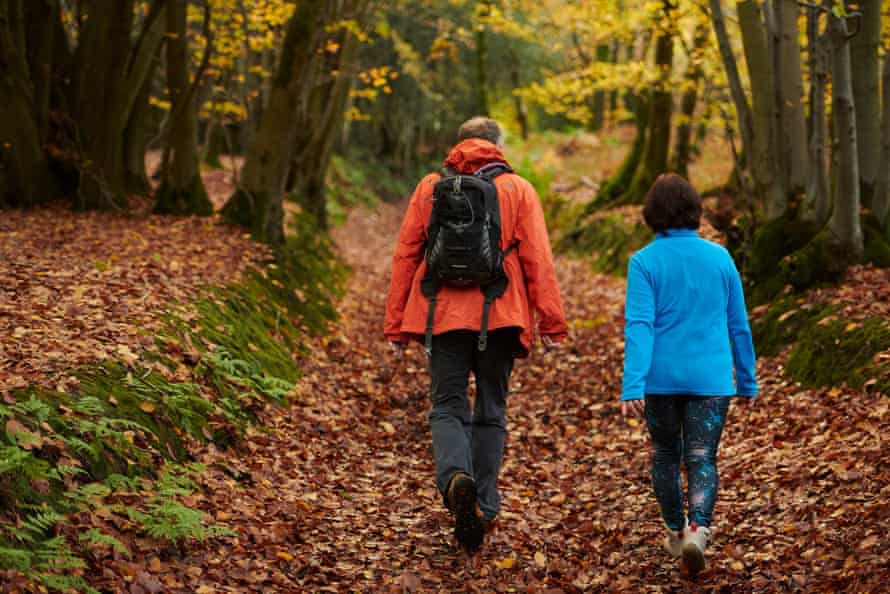
Organisers of long and short walks put it differently, but their message is similar. Guy Hayward of the British Pilgrimage Trust, formed in 2014, reports a substantial rise in the number of people joining walks to holy sites and places of spiritual resonance. A new book he’s co-authored, Britain’s Pilgrim Places, sold out its first print run. He puts this down to “the thirst for a new direction of the inner life”, intensified by crises such as the present one.
Go Jauntly, London-based creator of a mobile app specialising in local and family-friendly walks, has seen its membership rise by 80% to 63,000 since the start of the outbreak. Co-founder Hana Sutch attributes the increase to people’s desire to stay close to their own neighbourhoods while getting some proper walks in. Sydenham Hill Wood in south-east London, a remnant of the once-sprawling and productive Great North Wood, is proving one of its most popular destinations.
Meanwhile the ever-active Ramblers walking charity has received a shot in the arm – the cash kind – from the National Lottery Fund to support its Walking for Health programme. Thanks to this, some 70,000 people are discovering the wellbeing, mental as well as physical, claimed by serious walkers over the years, from Wordsworth to Woolf, Beethoven to Botham.
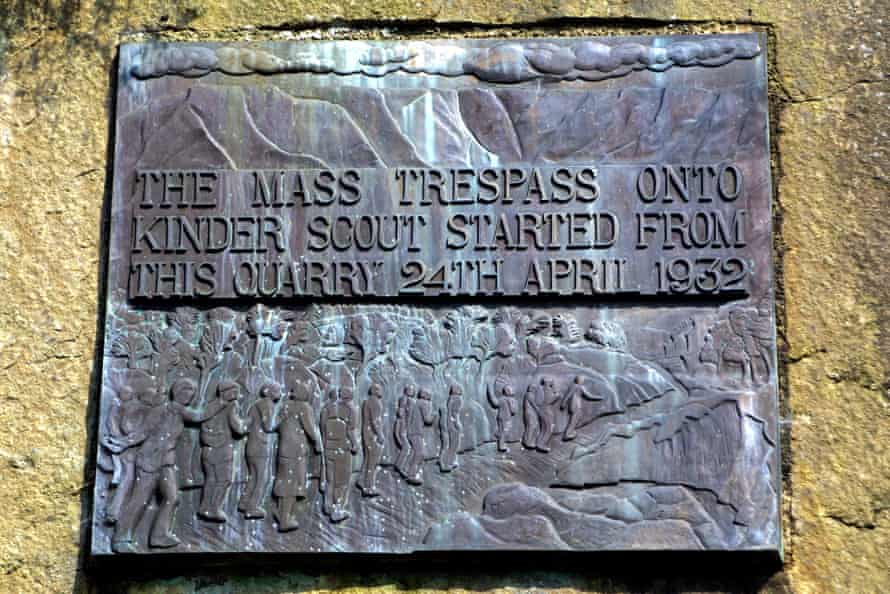
Despite its folksy name, the Ramblers, with a membership of 123,000, has a history of hard-nosed radicalism, fighting the landed gentry for the right to roam. Initially called the Ramblers Association, it was formed in the wake of the 1932 mass trespass on to the Duke of Devonshire’s Kinder Scout grouse moors in Derbyshire. Its rebranding as plain Ramblers in 2009 was part of its drive for a younger and more urban image.
All this is worth mentioning now since walking, whether alone or in groups, embodies fundamental notions of personal liberty. You only have to read the poems of prolific 19th-century walker John Clare, written during the great enclosures of his native Northamptonshire and its neighbouring Lincolnshire fenland, to know how viscerally such losses of freedom have always bitten. It may sound ridiculous to mention his lot in the same breath as our own year’s lockdowns, but aren’t we also being told – for different reasons – where we may and may not go, and when, and with whom, and for how long?
The very act of walking has altered over the course of the year. This was most marked when the first lockdown eased and we nosed abroad, tentatively, hoping to find the old normality. It was instantly clear that – to steal from WB Yeats – all had changed, changed utterly. There was a grim comedy to it. Like many others, I kept my first forays suburban. To Kew, to be precise. Richmond proper, and the park at the top of its famous hill, just a mile away, felt as distant as Devon.
The air looked clear enough, and yet everyone had a wariness in their stride and their stare. The confidence had gone from their shoulders. It was as if they could see, a hundred yards away, that fearsome thing, another pedestrian, bearing a dark swarm of contagion around his head, like an evil halo. Pleasant neighbours mutated to lethal units. People – rational-looking people – made extravagant slaloms, right off the pavement and out beyond the parked cars into the centre of the empty roads.
On a narrow footbridge over the District Line the strangest incidents started occurring. That is, they were strange until they became commonplace. It took on the character of the log bridge in Sherwood Forest where Robin Hood and Little John first confront each other. Only one of us is going to make it to the other side.
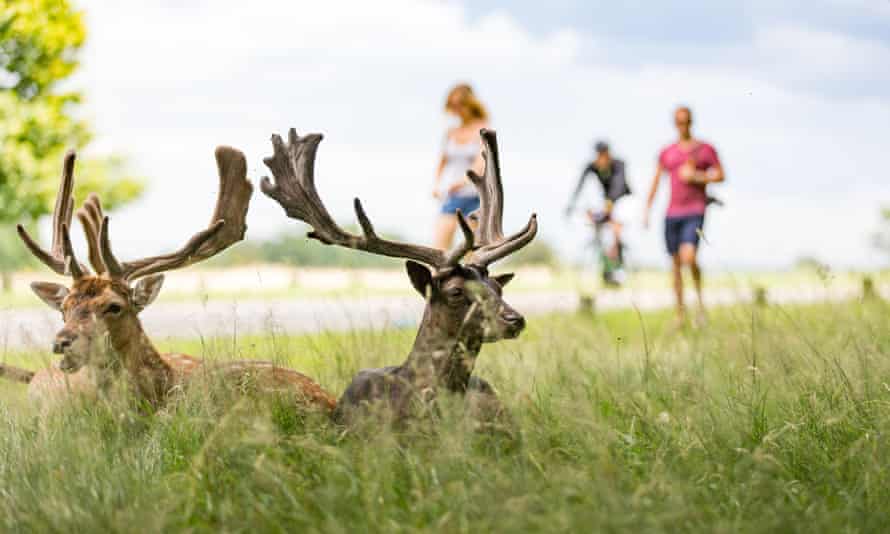
You could find yourself facing a stranger. Down at the far end he looked pleasant enough. He even had the in-this-together demeanour. Us walkers, hey. But then you’d see him take in a deep lungful of air, like a swimmer preparing to do a length underwater. Up went the mask from chinstrap to visor and along he bowled, barely nodding halfway. He has you down as a killer, and the feeling is mutual.
In the days and weeks that followed, I, like many others, got a little bolder and started straying gingerly from base. No longer just the local streets and their modest interruptions of green, but away up to Richmond Park. This is famously a life-saver of regional proportions.
Almost four square miles inside its eight-mile perimeter wall; a contained infinity of footpaths, ranging from gravelly pedestrian A-lanes to promising gaps in the bracken. Deer herds descended from Charles I’s; lakes and ponds; woods with interior vastnesses; a country pile-turned-restaurant that was Bertrand Russell’s childhood home. White Lodge, former home of Georgian royalty and present one of the Royal Ballet School. And all the while, coming and going like close flashes of another world, the view into London with its shapes of Shard, Gherkin, Cheesegrater and the rest.

The park had its own Kinder Scout moment when, in 1758, a Richmond brewer called John Lewis took legal action to overturn the public access ban imposed seven years earlier by George II’s daughter Princess Amelia. Though Lewis now has a blue plaque by the Sheen Gates, he died bankrupt for his pains.
Gradually, during the summer, I started going back to the splendid walking country of the Chilterns, through the chunk of not-quite-countryside known as Metroland. I’d already done two-thirds of the Chess Valley Walk, and needed to polish off the five-mile stretch between Latimer and Chesham.
When I’d done that, I went back to Chorleywood in Hertfordshire, which, if Metroland had a capital, would be a strong contender. A few minutes from the station, an unexpected cut between the houses takes you straight into towering woodland. Then the holloway between the fields towards the great Tudor mansion of Chenies, with its south-facing wall built without windows in order to keep the place safe from the Plague, borne on the winds from London. On the day I went, the place was shut, not because of coronavirus, but because the grounds were ablaze with arc lights and period-frocked actors.
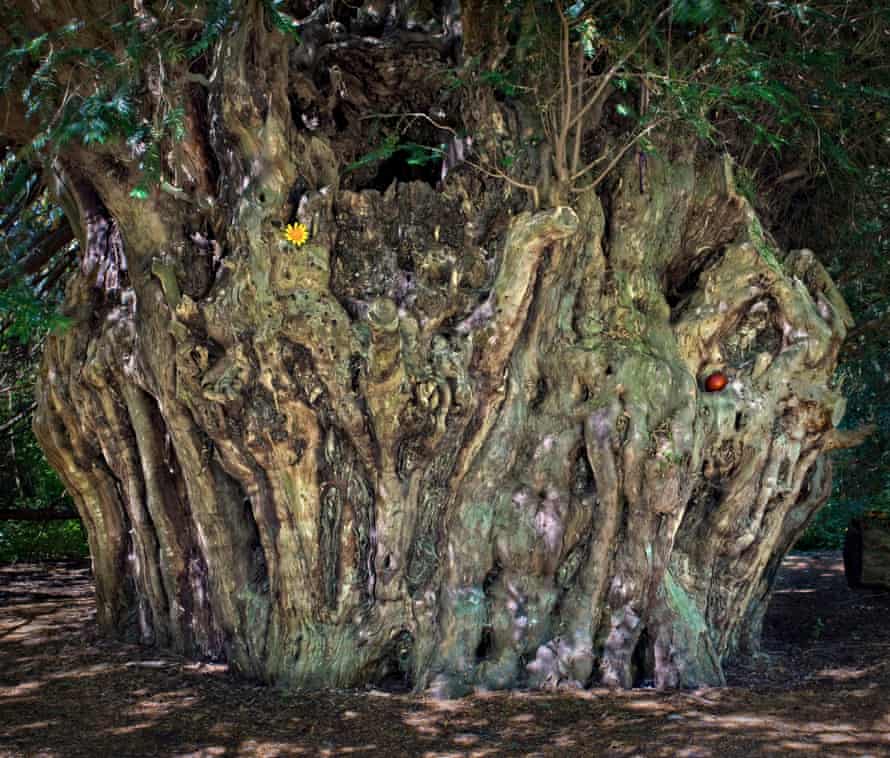
Then Wraysbury, unpromisingly sited close to Staines and Heathrow. But again, you’re barely minutes from a hinterland of wild banks, inlets and causeways that carry you between the huge expanses of lake stretching west towards the Thames. Before the river, a walk down Magna Carta Lane brings you eventually to the astounding spectacle of the Ankerwycke Yew, said to be, at 2,500 years, the oldest tree in Britain. Visitors – pilgrims indeed – do stand awed by the squat defiance of its mass, the stony aspect of its plaited growth, the full canopy thriving overhead.
Then, more ambitiously, I tackled the North Downs Way, barely 20 miles from London but lent a sense of remoteness by the go-nowhere months. East from the suburbs of Guildford run deep pilgrim paths which go all the way to Canterbury. A steep sandy climb up to Saint Martha’s Church, frequented by the writer John Bunyan, was according to some the inspiration for his Hill of Difficulty in The Pilgrim’s Progress. Through Albury Park, laid out by the 17th-century landscape gardener and diarist John Evelyn, and on into the almost criminally well-preserved village of Shere.
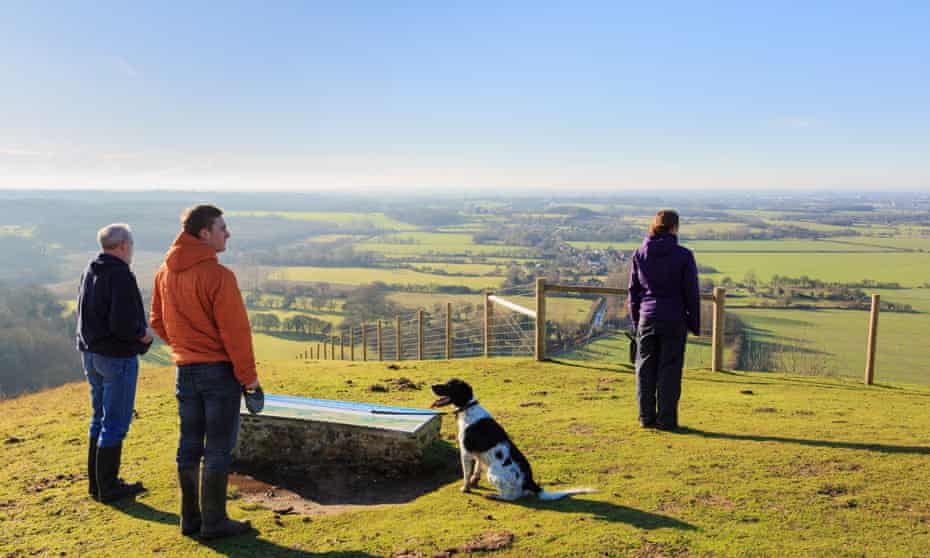
On all these routes I found myself taking photos obsessively. When I admit that to fellow walkers, I find I am far from alone. One reason is the ease of the task in the smartphone age. The apparently plain image of a track leading into a wood can remain eloquent years after you have trodden it. You have, if only in a virtual sense, taken ownership of it through the eyes in your head and the soles of your feet.
This notion was a constant encouragement, and reward, for the great travel writer John Hillaby, author of the 1968 classic, Journey Through Britain. This chronicled his 55-day walk, at the age of 50, from Land’s End to John O’Groats. The aim was to do it without setting foot on metalled road. When I met and walked with him many years later, he still spoke of the impulse in almost spiritual terms. In the course of our modest 12 miles along the Seven Sisters, he did cuss repeatedly about having had to resort to miles of tarmac during the West Midlands stage of his epic.
To live was to walk, he said; and to walk was to live. It was as simple, and as vital, as that. Both were journeys, and they were joined. The same was true for another immensely influential figure in the growth of walking and its literature in the mid-20th century, Alfred Wainwright. It was he who painstakingly logged his exploration of the Cumbrian fells in words and drawings, all faithfully reproduced in best-selling guides published by the Westmorland Gazette. He, too, who pioneered the 190-mile coast-to-coast route that now bears his name, from St Bees Head in Cumbria to Robin Hood’s Bay on the North Yorkshire coast.
It was from Wainwright, deep into retirement in his Kendal home, that I heard these words, as frank and rueful as any that you’d not wish to hear from such a person: “When I was young, I thought I’d draw them [the fells] so’s I could still look at them when I was too old to climb them. Now I’m that age, my eyesight’s that poor I can’t see them.”
No, but we can, and always will. He’d be glad of that. It may be an ungainly thought that we walk through our country on giants’ shoulders, but we do.





